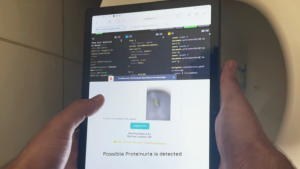The adventure-survival game No Man’s Sky has successfully implemented a new way to navigate a virtual sci-fi universe. With space travel as its main impetus, the game features upwards of 18 quintillion unique and explorable planets.
In other words, this videogame’s scale of content is so unimaginably vast that it would require over 500 billion years to visit every one of its planets for only 1 second. Furthermore, every planet features unique ecosystems, natural life and resources to be probed by the player.
How did the English game studio Hello Games manage to load this colossal amount of data on a modern disc for Playstation 4 and Microsoft Windows? The answer lies in an innovative technique called procedurally generated content. In essence, the ‘mind’ of the computer imagines these planets during gameplay rather than referring to a bank of written code that was authored by human developers. This method achieves remarkable data economy while being able to realise a truly expansive virtual universe.
The software of No Man’s Sky tasks the computer to generate data on the fly. It utilises an index of parameters that was written by Hello Games to set the stage. For example, the game knows that mountains consist of rock and soil, that flowers have petals and that marine life usually uses fins to move around. The computer paints the rest of the picture by itself.
The mathematical engine of No Man’s Sky uses a life-like scale of probability too. Quite like the real universe, the game’s galaxy includes a great deal of celestial bodies that are completely barren and inhospitable to life.
Developers chose to a apply a gradient of foreign intensity across the map as well. In other words, the outer radius of No Man’s Sky’s universe (where all players start their journeys) holds planets that are most like Earth in terms of ecosystems and lifeforms. The further a player travels towards the center point of the universe, the more alien-like and unusual the planets become.
It is a fine balance of parameters that the game designers had to uphold during development for No Man’s Sky to work properly. Too many rules would result in planets having too many common variables and repeated characteristics. Too few, and the planets and creatures would seem abstract and too alien in character.
No Man’s Sky has a four-pronged approach to gameplay. The player is encouraged to explore, trade, fight and harvest resources between cosmic systems. Players can interact with computer-based alien factions in a friendly or hostile way. Some destructive acts, such as killing many indigenous lifeforms or depleting the natural resources of a planet will attract the attention of cruising robot Sentinels that will hunt the player. By travelling to new planets and examining their geology and ecology, players collect information that can be submitted to Atlas.
Atlas is No Man’s Sky’s universal database. Information can be shared among players via Atlas and its encyclopedic registry of planets is built upon in exchange for in-game currency. Head developer, Sean Murray, explains to CNN the element of human choice that is introduced with regards to the guidance that Atlas offers to other players.
"There's a reward for every piece of information that you share [with Atlas], but you've got to judge whether it's as good as keeping it to yourself. You could be the only one to find a certain type of ship," says Murray.
For all its impressive variables, mind-boggling virtual size and visual style, No Man’s Sky has not gone without criticism. On release, the game’s survival theme was found to be dreary and lackluster compared to its grand scale. While Hello Games was praised for No Man’s Sky’s technical achievements, its actual gameplay experience emerged as essentially repetitive.
It is the game’s mathematical engine that remains a powerful step forward in the world of open-exploration videogame development. It may redefine the way data is applied and utilised on many digital platforms of the future.







